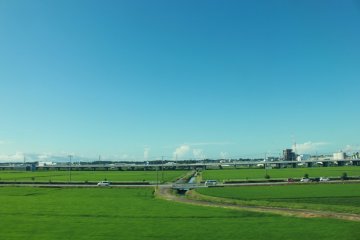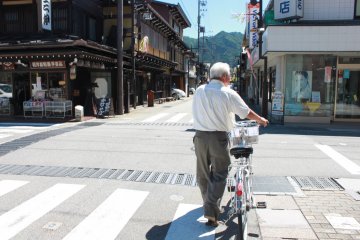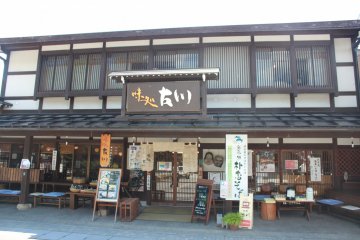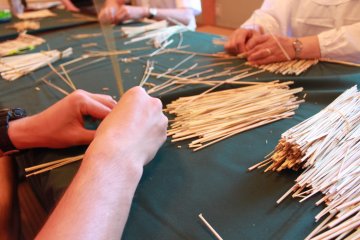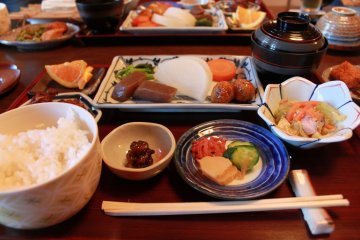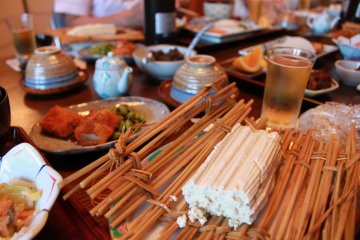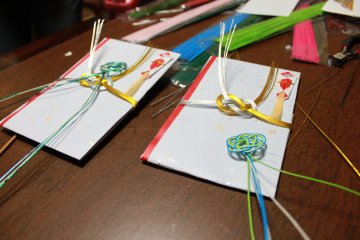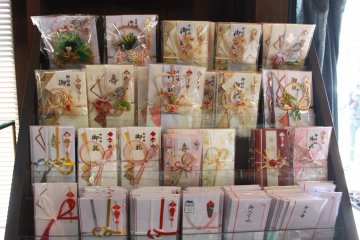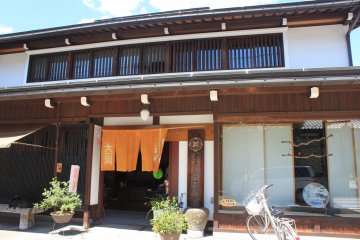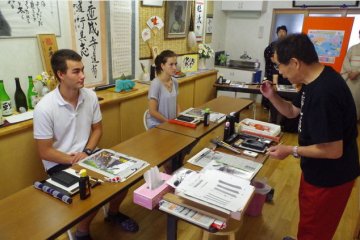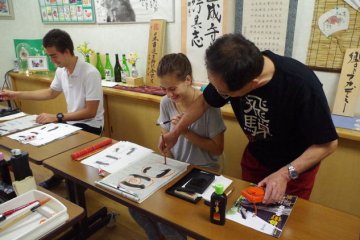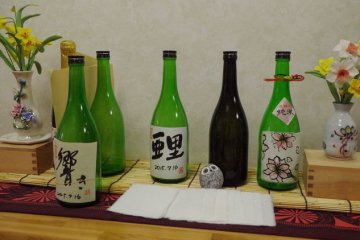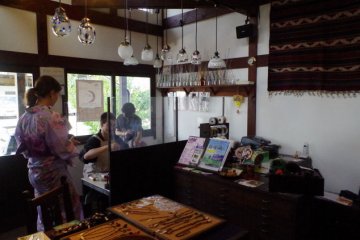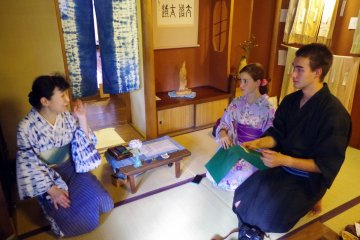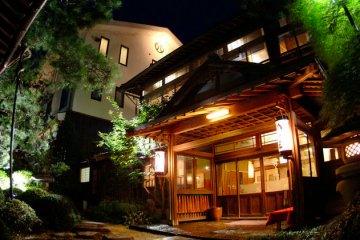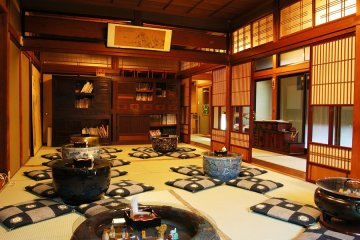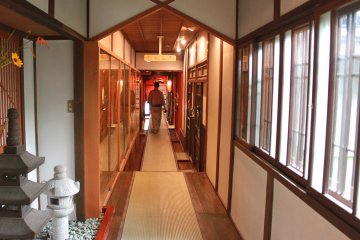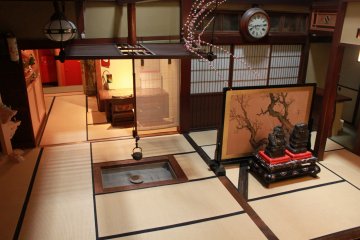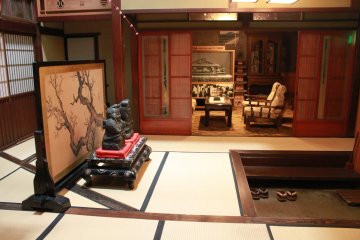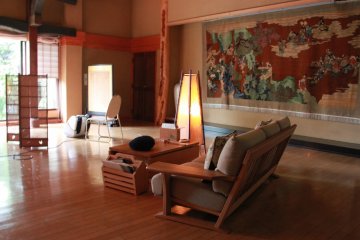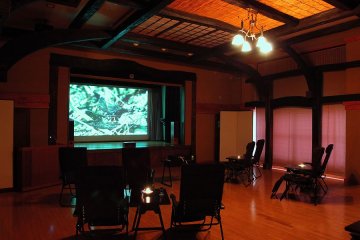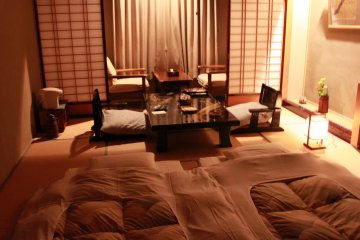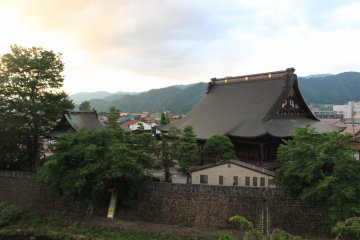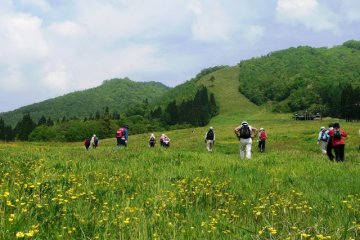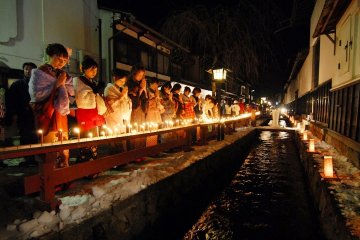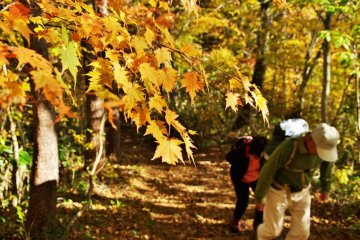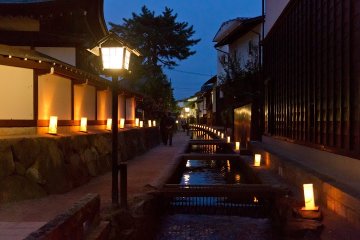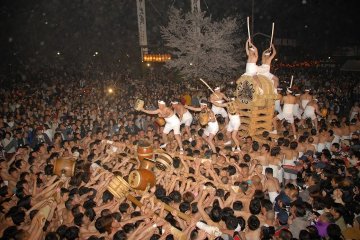Far from the noise and pollution of the city, Hida Furukawa is a small town located amidst the beautiful green mountains and endless rice fields of Gifu Prefecture. The “Takumi of Hida” were known for their exceptional carpentry skill and much effort has been made to protect the stunning wooden architectural cityscape. A well-preserved town full of history and culture, this quaint town retains the feelings of old Japan.
If you are looking for an authentic Japanese experience in a rural town away from the city, Hida Furukawa is the stop to make. A quiet town where locals live in a space with no constrain of time, you will find it impossible not to relax and stop to breathe the delicious fresh air. Explore this stunning town with Yatsusankan, a traditional ryokan dating back to the Ansei era (1854-1860). From the moment you arrive, you will be treated with cordial regard, and find yourself in a space full of history. Luckily for those who like to be on their feet, a scenic cycling route, and many activities to participate in are all walking distance from Yatsusankan.
Komo-dofu making and lunch

Blessed with a lush natural setting of mountains and rivers, the Hida region is full of delightful local delicacies. Komo-dofu is one of the many traditional dishes from this area and has long been adored by the locals. Originally preserved as a protein source for the cold winters, it is now part of their everyday meals and particularly seen at special occasions.
The komo-dofu making was by far one of the most delicious activities I have participated in. If you are looking to eat a hearty and delectable local lunch, this activity is a must! First making the komo, we were then treated to a delicious lunch, an experience my stomach will never forget.
The komo is made out of wara (straw), and the rice stalks are specially ordered from farmers that do not use pesticides or chemicals. Seemingly simple, weaving the wara was a challenge I enjoyed. With years of experience, our two teachers kindly shared their tricks, and second time round I was much more successful. Weaving about 22 batches of wara on both ends, we then wet the wara and wrapped it around the tofu. Boil for 20 minutes, and the komo-dofu is ready to be eaten! Moved to the dining table for lunch, I was astonished at the amount of food placed in front of me. Both healthy and delicious, it was the perfect way to prepare for the activities ahead. Let them know beforehand about any allergies or if you are vegetarian, they are flexible with the menu!
Coin purse (Gamaguchi) making
“Gamaguchi” refers to a coin purse made of cloth with its metal opening. It literally means “a toad’s mouth,” because the metal opening illustrates the large mouth of a toad.
You will get to choose your favorite from a selection of cloths from old kimonos, in which all of them have very authentic and colourful designs. Once you select your cloth, you will start sewing the sides together and shape it into a bag. A lovely instructor will assist you with sewing if you’re in need of any help. After the sewing, all there is left is to attach the “toad’s mouth” to the cloth.
Kids in Japan used to carry these gamakuchi coin purse around their necks when they didn’t have bills. It would be a great souvenir for friends and families, as it could also function as a small cosmetic bag. Definitely a great program for ladies.
Mizuhiki making

Whether it is for weddings, funerals, a graduation, money giving is a common practice in Japanese culture. This ceremonial tradition can be seen as a sign of affection, respect, gratitude or condolence. The money is carefully placed into a kinpu, a special envelope enclosed decoratively with mizuhiki strings. The mizuhiki string is a thin twine made of washi (Japanese paper) and its durability enables the creation of elaborate designs. The design varies depending on the occasion and though seemingly simple, I was surprised at how difficult it was to manipulate the strings. We tried the basic circular tie, and next challenged the flower design. It can sometimes get confusing as to which string you have to pull and twist, so our teacher kindly recommended us to choose different colours in order to tell the difference.
Before this, I have never quite considered the skill necessary to create the designs seen on the envelopes. It was amazing to see how our teacher created stunning designs out of the string with ease. Why not give it a challenge and bring this practice back home to create a unique envelope for friends and family? There are no limitations to the designs so it is a great chance to create your very own piece!
Yukata rental

A traditional Japanese garment, the yukata is commonly worn during the summer, as a lighter and casual alternative to the kimono. A typical yukata ensemble consists of undergarment, obi, geta sandals, kinchaku bag, and yukata. Visit the Obara 大洞where there are a wide variety of colours and designs to choose from and although men’s yukata tend to be simpler, recently there is an increasing appreciation for more embellished designs. The transition from our casual wear to yukata was delightful as we prepared for a walk around town and experience life as it was decades ago.
The quaint town of Hidafurukawa makes for fantastic photo opportunities, so I highly recommend visitors to walk through town with rental yukata. A great photo spot is by the Seto River where there is a simple yet elegant path between the stone walled temples and white storehouses. The canals are also home to over 1,000 carps, and visitors can enjoy observing and feeding the koi swimming upstream.
Japanese calligraphy and sake label making

A form of writing, both artistic and symbolic, Japanese calligraphy has long been appreciated by the Japanese. Only a few minutes walk from our ryokan, we were taken to Mr. Sawatani of a former calligraphy teacher who now has opened the second floor of his home to offer lessons to children. His humour and attention made for an extremely entertaining lesson, and although his English was not perfect, I had no problem understanding him as he demonstrated the strokes clearly in front of us. He first gave us the opportunity to practice the traditional way of using the inkstone to grind the inkstick to create ink. Because this is a tedious and time-consuming process he kindly offered us bottled ink, and soon after we began the lesson.
Given multiple opportunities to practice, and he warmly guided us through the different techniques of all three Japanese forms of writing. Japanese writing allows for many stroke techniques and I took pleasure in practicing with both my thin and thick fude (brush). Finally, we were given beautiful squared washi paper and a choice of any word in order to create our personalised sake label. I was very nervous and overthinking it and as a result did not produce a great piece. However once we walked to the sake storehouse and they stuck it on the bottle, I was impressed with the final product! This is a perfect souvenir to bring home and as a sake lover I am overjoyed.
Tombo dama

Set out slightly further from the other activities with a great view of the hills that surround Hidafurukawa, you will find Kazari, a craft shop owned by a lovely lady. From wooden accessories, pottery, illustrations to glass craft, there is a wide selection of beautiful hand-made crafts. We had the chance to try glass-bead making and create our very own accessory.
First selecting two to three colours of glass we were given a brief summary of the activity. We began with melting the glass using the Bunsen burner to create the basic circular shape of the bead. It was incredible to watch how quickly the glass melted and take different forms depending on the various hand movements. The activity was much more difficult than I had anticipated as I struggled to simultaneously perform different movements with each hand. However under professional supervision and owing much of my success to the teacher, my glass bead turned out great. There is an option of bracelet, necklace and key chain.
Along with the many purchasable accessories in the store, this will be a lovely personalised gift to yourself or even family and friends. The glass needs to be cooled down for only 20 minutes so you will have your piece at hand in no time!
Weaving

Visit the Yuu Kobou (由布衣工房) for a chance to weave in a historical setting. From the natural dyeing to weaving, everything is done at the workshop, open for visitors to watch them work. Call beforehand and under the guidance of these master artisans, you will be able to create your very own piece. In addition, these gems of craftsmanship are sold at the shop so stop by to take a look. Set in a historic area near the Seto River, it is no surprise that the venerable craftsmanship and charming building has been designated as a Tangible Cultural Property. I was fortunate to work on one of the weaving that has been used since the Taisho era and was overwhelmed by the thought that I was sitting in the same spot as many ladies who have dedicated their lives to this craft.
Again only a short walking distance from the Yatsusankan, if you do not have time to fit the weaving into your itinerary, I highly recommend a quick walk by this historical and cultural heritage.
Yatsusankan ryokan

The perfect complement to this quaint old castle town, it is a great place to unwind and take a break from all the hassle of everyday life. Nothing is done half-heartedly, and you will be able to experience the full treatment of Japanese omotenashi. From the moment of your arrival, you will be treated with the utmost grace and care.
Once you have settled in your rooms, take the couple hours before dinner to explore the ryokan. The older reception area has been maintained in its original form, and almost as if you are walking through a time capsule.
Soak in the soothing waters at the two baths, and if you prefer to dip in at a quieter time, right before dinner, first thing in the morning and after breakfast there is a high chance you will have it to yourself. Wear the yukata provided in the rooms and enter a complete relaxation zone and head to the lounge area for dinner. Beginning with a welcome drink in the lounge area, all guests are then escorted to their very own private rooms to be treated to a divine dinner.
Using local ingredients you will watch in awe as the assortment of dishes are brought to you one by one. Beautifully decorated, the food was not only tasty, but an artistic masterpiece. Hida beef melting in my mouth still brings back happy memories…
A traditional Japanese style stay, the Yatsusankan is beyond compare. Located centrally in Hida Furukawa, it allows for easy access to all the main attractions and activities in the area. For those interested in taking part in any of the activities mentioned above, contact the Yatsusankan to facilitate bookings.








